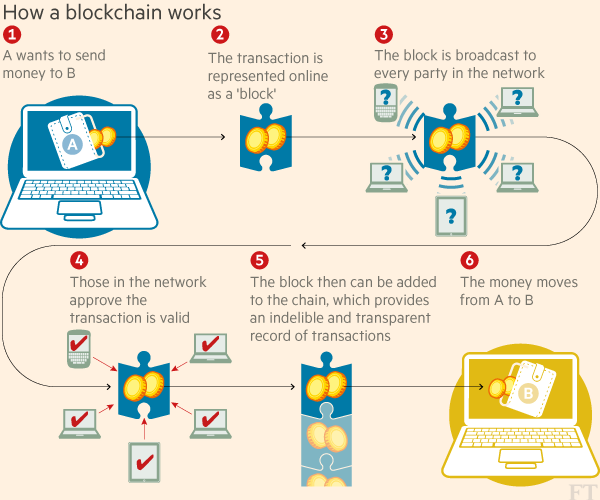Blockchain in schools and colleges
Context
-
The pandemic affected educational institutions worldwide. While we hope that campuses will again buzz with the physical presence of students and teachers, the widespread use of digital technology in education is here to stay.
Digital Education Ecosystem (DEE)
- Content development, teaching, evaluations, grading, attendance recording, achievements, certificates, degrees and diplomas.
- Educational institutions, prospective employers, mentors and certification agencies can be integrated.
- The blockchain can emerge as a viable solution to manage such an integrated DEE.
What is Blockchain?
- Blockchain derives its name from the digital databases or ledgers where information is stored as “blocks’’ that are coupled together forming “chains”.

Credit: World Economic Forum - An exact copy of the blockchain is available to each of the multiple computers or users who are joined together in a network and any new information added or altered via a new block is to be vetted and approved by over half the total users.
- With the advent of the Internet of Things (IoT), availability of cheap computing and internet services, blockchain technology can now facilitate innovations across a range of processes and applications requiring management, storage, retrieval and safety of vast and important information.
Benefits of Blockchain technology in Education
- Manage student records ranging from day-to-day information such as assignments, attendance and extracurricular activities, to information about degrees and colleges they have attended.
- It would be a secure system that ensures educational records remain immutable.
- These could be relied upon by prospective educational institutions and recruiters, who can be provided access to relevant records.
- Similarly, information about teachers can be safely stored and this would enable an educational institution to monitor faculty performance.
- The blockchain ledger would provide a time-stamped and tamper-proof record of faculty performance — attendance, student evaluations, number of students opting for their electives, research output and publications.
- These records could be linked to faculty appraisal systems, thereby ensuring greater accountability.
- The NEP-2020 calls for introducing multidisciplinary education where students would be able to choose their own combination of major and minor subjects along with flexibility in course duration. Here too, blockchain can help implement such a multiple-entry-and-exit structure.
- Further, students can be assured of the quality of teachers and educators. It could enable educators to display their certified Skill Badges, allowing students to opt for courses in an informed manner.
- Meanwhile, students too, especially those in higher education and research, can adopt Skill Badges to indicate their proficiencies. This would enable faculty to identify the right students for projects.
- A blockchain-based ecosystem could also be used to design a scholarship system incentivising students to maintain consistency and achieve academic excellence.
Challenges
- Data privacy, cost, scalability and integration with legacy systems
Way Forward
- With the National Education Policy 2020 (NEP-2020), India has set an ambitious agenda. The goal is to achieve a 100 per cent Gross Enrolment Ratio (GER) in school education by 2030 and double it in higher education, to reach 50 per cent by 2035.
- We need to invest in digital education and related technologies to achieve these ambitious targets and to provide education that is holistic and multidisciplinary.
Conclusion
- The adoption of blockchain in education could help improve the efficiency of the education ecosystem and optimise the use of human and physical resources.
- Doing so is worth every penny as it would help usher in an educational system that is better equipped to handle higher enrolment while being secure, transparent, collaborative, creative and future-ready.
Visit Abhiyan PEDIA (One of the Most Followed / Recommended) for UPSC Revisions: Click Here
IAS Abhiyan is now on Telegram: Click on the Below link to Join our Channels to stay Updated
IAS Abhiyan Official: Click Here to Join
For UPSC Mains Value Edition (Facts, Quotes, Best Practices, Case Studies): Click Here to Join
